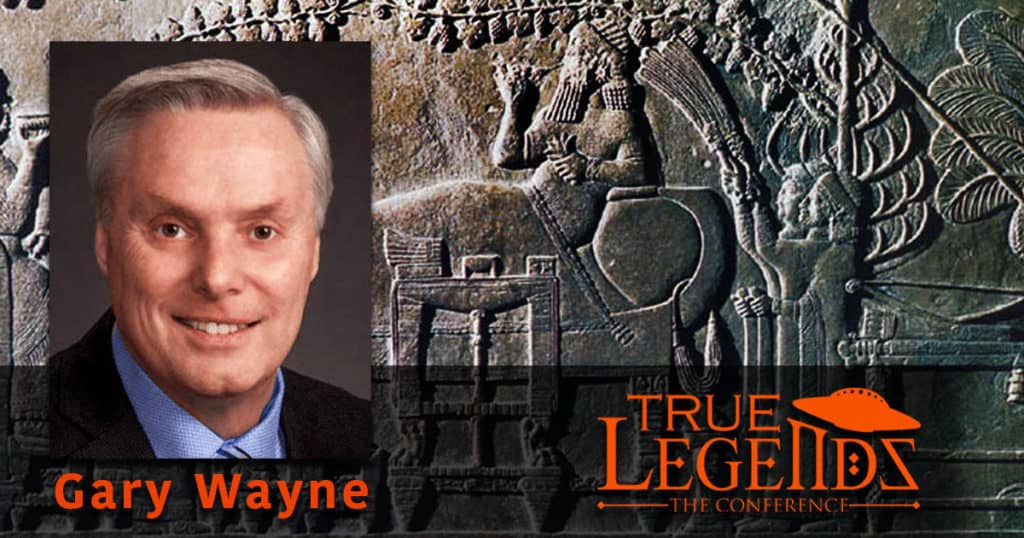Copyright © GenSix Productions 2025, All Rights ReservedSteve Quayle: “Dear friends, what I’...
(Scroll down to continue reading)
SQ Private Briefings subscribers: To clear up any confusion, you can continue to renew your SQ Private Briefings subscription annually with the card/payment method you already have on file.
Visit the "My Subscription" area of your account to see the status and renewal date of your subscription.
For more information view this FAQ

by Gary Wayne
The mysterious Gilgal Rephaim ruins located on the Golan Heights slightly northeast of the Galilee Sea are variantly referred to as the “Wheel Of The Rephaim”, “Wheel Of The Spirits”, “Wheel Of The Ghosts”, “Rujim el-Hiri (Arabic)”, and Rogem Hiri. Gilgal Rephaim dated to 3500-2700 BCE is elevated on a large plateau close to Caesarea Philippi towards Mount Hermon, in the land of Og who reigned from Ashtoreth in Bashan (Jos 12:4).
Archaeologists theorize this pre-flood megalith was constructed to align with sacred astronomical alignments like the solstices, a solar calendar, a religious ritual site, and/or a burial site for demigod kings.
Adding to mercurial ambiance of Gilgal Rephaim are its hundreds of unexplained “dolmens”. A dolmen is a mini-megalith with large stones resting on other large stones similar to “Welsh/Irish Cromlech altar stones. Cromlech derived from the Breton language for stone table. In Welsh, “Tolmen” meaning "hole-stone" was later transliterated to Dolmen and/or Taol (table) maen (stone).
Dolmens are further known as “Portal Tombs” and “Fairy Dolmens”: portals to the Underworld associated with the Fairy Tuatha De Denaan giants of Ireland. Dolmens are known in Irish as dolmain; Bulgarian: dolmeni; Korean goindol (goin: stacked and dol stone). In German dolmens are called “Hunenbette”; Dutch: “Hunebed” where “hune” means giant and “bette: grave or bed. In the Basque region dolmens are “Trikuharri” attributed to the Jentilak, a race of giants. In legend the Basques were “Homo-Atlantis” who survived the flood to establish civilization in Spain, Egypt, Mesopotamia, and Scythian, noting Tuatha De Denaan migrated to Ireland from Scythia.
Knowing this, one should not be surprised that Gigal Rephaim is linked to portals, giants, and Rephaim Kings Og and Sihon of Bashan of the Mount Hermon region (Jos 12:4 & 13:12). Og reigned at Ashteroth Karnaim (Ashteroth) linked with Rephaim giants in the war of giants in Gen 14.
Og reigned over Mount Hermon where Nephilim were believed first procreated from Watchers (1st Enoch 6:2 &5-6) documented in Gen 6:1-4. None of this information is coincidental. Og’s kingdom was the renowned “land of giants” (Deu 3:13), all the while noting Og was the last and/or remnant of the Rephaim.
The Ugaritic Rpum/Rapiu were demigod kings connected to Underworld ghosts and shades/sidhe. Rpum/Rapiu are thought to be a transliteration for Rapha/Rephaim, just as the Tuatha De Denaan were part of the Sidhe/Fairy people of portals.
Ugaritic texts recorded Rapiu as a king [like Og]: “My Rapiu king enthroned as Ashteroth” (KTU1.108). These demigod kings travelled back and forth between earth and the Underworld through portals. The Rapiu “travellers” are reminiscent of the “passengers” in the aftermath of end-time Gog war (Eze 39:11-14). Passenger, Hebrew “Abar”, means to cross over, pass over, travel across, pass away; all the while noting Gog and Magog were giants in Greek mythology were sons the god Iapetus.
In Job 34:20-22 “Abar” was employed for those who pass away, die: the “mighty” who are taken away. “Mighty” derives from “Abbiyr” describing mighty men, angels or princes that bring Rephaim to mind. Job 18:8 utilizes “Abar” for passing through or travelling, all which is similar to the Rephaim demigods travellers of Ugarit Texts.
In this line of thought, Eze 39:18 references these princes as “mighty”, “Gibbowr/Gibborim, also used to describe Nephilim in Gen 6:4 as “mighty men”. The mighty ones of Eze 39 are the slain princes of the earth (Rephaim bloodline descendants), and are described as the “fatlings of Bashan” in the Gog war. Gog’s army and alliance of kings will be destroyed by God (Eze 39:17) in Og’s kingdom of Bashan, from the Golan heights where Gilgal Rephaim is located to the West Bank.
“H7497 Rapha” meaning giant and a tribe of giants (Rephaim) originates in a series of words including “H7496 Rapha” meaning ghost and spirit of the dead, shades, and sidhe, just as 1st Enoch describes as the evil spirits of the antediluvian Nephilim (Eno 15:8-9) and the Tuatha De Denaan are part of the Sidhe people.
Into this historical backdrop, Israel ventured into war with Rephaim Kings like Og, Sihon, and others against armies bolstered by additional giants and hybrid human giants like Amorites, and when Israel began their conquest of the Covenant Land, the dragon’s lair of the “Mighty Seven” nations (Gen 15:20-21).
Israel established their base camp at Gilgal after crossing the Jordan River(Jos 5:10), which I do not believe was coincidental, but site selected to send a strong message to Rephaim led Canaanite nations. “Gilgal” means wheel indicating Israel’s base camp was located at one of the Rephaim’s alignment of elevated worship and ritual sites on what we call the West Bank today.
Israel returned towards the Geliloth after travelling through the valley of the giants to the Stone of Bohan, a marker used later to divide the territories of Judah and Benjamin (Jos 18:16-17). Geliloth is stated by Unger’s Dictionary as Israel’s base camp, where Israel erected the 12 stones (Jos 4:19-20) from the Jordan River as a trans-generational memorial marking God’s miracle of parting the river, enabling Israel to cross.
Geliloth, “Gliyowth” is the plural format of Gilgal meaning circuits and circles. Circuit, before electricity, was defined as a journey, a periodical traveling place to place for priests to travel within: a roundabout journey or circular journey, which stirs up images and connections to Gilgal-Rephaim and its occult giant religion.
Similarly, “H1530 Gal” is the suffix for Gilgal, means heap of stones suggesting Gilgal was not only a memorial for Israel’s crossing of the Jordan River, but also infers stones erected upon each other in a wheel or circular pattern with dolmens as in Stonehenge and Gilgal-Rephaim. “Gal” is not applied for Israel’s monument.
Gelioth as the plural for Gilgal/wheel summons images of multiple wheel sites. One wonders if Giglal/Gelioth on the West Bank was indeed part of an important ancient circuit of Gilgal-Rephaim cult centers, both before and after the flood; regions that were an epicenters for polytheism. The West Bank was an excellent source for hewing rock slabs from the land, and a region that sustained numerous quarries (Jud 3:19) for use in religious sites, a region where ongoing rebellion and wickedness occurred (Hos 9:15 and 12:11), which included bull sacrifices reminiscent of fatling bullocks sacrificed in the future Gog war.
The twelve-stones memorial representing the twelve tribes of Israel stacked at the Gilgal base camp (Jos 4:1-17) was a message sent to all the Rephaim infesting the Covenant land that a similar destruction awaited them as happened with Og, Sihon, the the kingdoms of Gilgal-Rephaim.
Thereafter, Gilgal as an important Rephaim expropriated site was regarded as an important site for Israel. Saul was crowned first king of Israel at Gilgal, (1Sam 11:15) and then set out as part of his Covenant kingship obligations to destroy the giant infested nations still oppressing Israel, which David later completed. Samuel slew the Amaleqim/Rephaim Agag at Gilgal that Saul refused to do (1Sam 15:33). Elijah was taken to heave at Gilgal (2Kin 2:1).
After defeating all the major Rephaim led city-states of the south, Joshua returned to their camp at Gigal to prepare for the northern campaign (Jos 10:40-43).
The Rephaim King of Dor was one of the mighty kings of the nations of Gilgal (Jos 12:23), whose kings joined Jabin’s alliance against Joshua in the northern campaign (Jos 11:2). The Gilgal region was dominated by Rephaim city-states and nations previously aligned as a circuit religiously and militarily, with the defeated kings of Gilgal-Rephaim and Bashan. The house of Gilgal (Neh 12:29): “Beyth hag-Gilgal”, “House of the Wheel” indicates Gilgal-Rephaim of the Galilee Panhandle and the Geliloth locations were indeed interconnected circuits and houses/temples for worship by giants, and/or royal “houses of the Wheel Rephaim.”
In fact, Galilee, “H1550 Galiyl”, where Gilgal-Rephaim is located, means a district and a circuit originating with “Galilahyah for heathen” circle, and “H155 Galiyl for ring. I cannot imagine a better etymological link between an alliance/circuit of Rephaim city-states and a circuit of wheel-like religious sites and portals.
What is also intriguing to note is that Gilgal, etymologically, has curious relationships with Goliath, brother of Lahmi, one of four remaining sons of a giants, Rapha killed by David band his mighty men (2 Sam 21:22 and 1 Chro 20:5). “Golyath” is a “reduplication”, a repeating grammatical format, pattern or element of “Galal” meaning to roll and/or to roll away, as in a wheel and Gilgal.
“Gilgal” roots back to “Galgal” meaning wheel, which also roots back to “Galal” as does Goliath, seemingly connecting Goliath as Rephaim of the Gilgal/Wheel cult. Additionally, “Gulgoleth” for Golgatha meaning skull, as well as its suffix “Gol” meaning bowl, circularly dished out, and reminiscent of an elongated skull also connects back to “H1556 Galal”. Capping the etymological word circle/circuit of, know that Galal for ring originates also with H1556 Galal.
Seemingly every curve bends Gilgal-Rephaim and its associated circuit of Gelioth sites around Rephaim giants and their Wheel Cult.
___
Gary Wayne, author of The Genesis 6 Conspiracy, is a Christian contrarian who has maintained a lifelong love affair with biblical prophecy, history and mythology. His extensive study has encompassed the Bible and Gnostic scriptures, the Qur’an, the Bhagavad Gita, Gilgamesh and other ancient epics, language etymology, and secret society publications. Gary Wayne is a speaker at True Legends The Conference 2020 in Branson, MO, July 10-12th.

Copyright © GenSix Productions 2025, All Rights ReservedSteve Quayle: “Dear friends, what I’...

Copyright © GenSix Productions 2025, All Rights ReservedDarrin Geisinger: “With Pope Francis a...

Copyright © GenSix Productions 2025, All Rights ReservedSteve Quayle: “Friends, let me ‘bott...

Copyright © GenSix Productions 2025, All Rights ReservedSteve Quayle: “Friends, we are NOW in ...

GenSix Productions was launched in 2014 with a mission to set the record straight giving an accurate historical and contemporary worldview based on the pivotal episode recorded in the sixth chapter of Genesis (as well as in many other ancient manuscripts and traditions). We believe that the narrative of Genesis 6 is the key to unlocking the secrets of the prehistoric past, and the cipher for decoding the mysteries of the prophetic future.
DISCOVER TRUE LEGENDS CONFERENCES